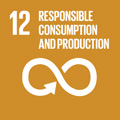- Docente: Giulio Malorgio
- Credits: 6
- SSD: AGR/01
- Language: Italian
- Teaching Mode: In-person learning (entirely or partially)
- Campus: Cesena
- Corso: Second cycle degree programme (LM) in Food Science and Technology (cod. 8531)
-
from Sep 23, 2024 to Nov 26, 2024
Learning outcomes
At the end of the course the student is able to define business strategies and organize activities in a market and consumer satisfaction. At the end of the course, the student will have knowledge and skills related to the tools and strategies of marketing mix
Course contents
The studentwho accesses this teaching is in possession of a preparation of the fundamentals of economics and management company and the basic knowledge of the structure and organization of the agri-food system.
Strategic marketing
1. Marketing concepts: objectives and activities of food marketing
The aim of
marketing: definition and scope, strategic marketing
and operational marketing.
The key concepts of
marketing: needs, food consumption
and demand,
supply, and characteristics of food
products, agro-food markets, socio-economic environment and marketing.
Market orientation: orientation to the
production, sale,
marketing
2. Strategies and planning of marketing
The segmentation
of markets. The analysis of competitiveness.
Positioning strategies. The food value chain,
the process of creating value for the customer. The
formulation of a marketing
strategies
Strategic planning: mission, resources,
organization, SWOT analysis, competitive strategies and
marketing.
The system for decision
support and marketing research:
the economic,
socio-cultural and technological environment.
The market
research. Techniques and data analysis
The collection of information. The measurement and prediction of demand.
Consumption and consumer
behavior. The Buying
Process.
Operational marketing
3. The components of marketing mix
In-depth analysis
of the 4 main levers
of marketing:
- The product: definition, quality, origin, the specificity of the food
product, handling the product, the
life cycle, the
differentiation of the
products, the value of the brand, brand
positioning
- Price: determining the
price, type of prices and price
policies;
- The distribution: the
distribution channels, retail and
wholesale, relationships with intermediaries, commercial
brands. The relation between industry and distribution.
- Communication: the role of
communication, types, develop effective communication, sales
promotion, personal
selling. The decision of marketing communication.
4. Marketing control tools
5. Tutorial application practices
Case studies through group work:
Recording and processing of information for the
creation of a marketing plan for the development of a
product
Preparing a budget
for a marketing plan.
Readings/Bibliography
Handnotes and diapo
Malorgio G. Marketing dei progotti agroalimentari. CREATE McGrawHill. 2022. ISBN 9781307810264
Teaching methods
Teaching consists of frontal lessons (32 hours) and practical lessons (8 hours). The front lessons serve to introduce and explain from the theoretical point of view and in depth the themes of strategic marketing and operational marketing. Practical lessons are made up of:
- Tutorials on some cases of in-depth study and, possibly, the classroom intervention of experts and / or industry professionals.
- Preparation and presentation by the students of an elaborate paper dealing with the development and implementation of a marketing plan. This is a project work where students are divided into groups and each group is entrusted with a specific topic to be developed.
Assessment methods
The exam takes place in presence.
The verification of the learning takes place through the only final exam that ensures the acquisition of the knowledge and skills expected through the conduct of an oral exam. This involves evaluating the ability to display and interpret the topics covered and the ability to apply analytical tools to existing relationships between production, consumer and marketing.
Students can book for oral exams using the methods provided by the online Alma Exam System.
If possible, depending on the number and motivation of the students, group work can be done (max 3 people) and can be taken into consideration in the final evaluation of the teaching.
Teaching tools
PC, Internet
Office hours
See the website of Giulio Malorgio
SDGs


This teaching activity contributes to the achievement of the Sustainable Development Goals of the UN 2030 Agenda.
